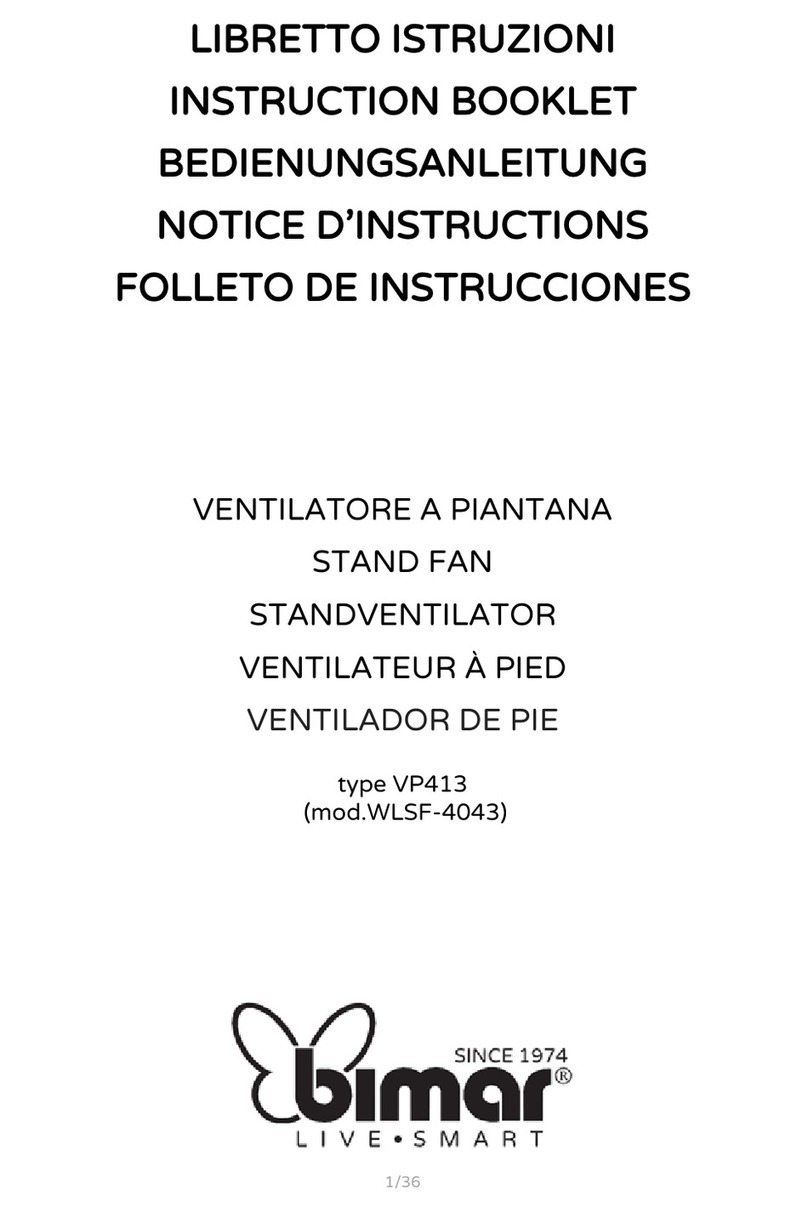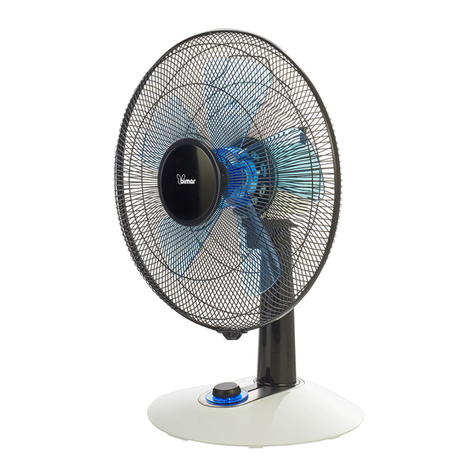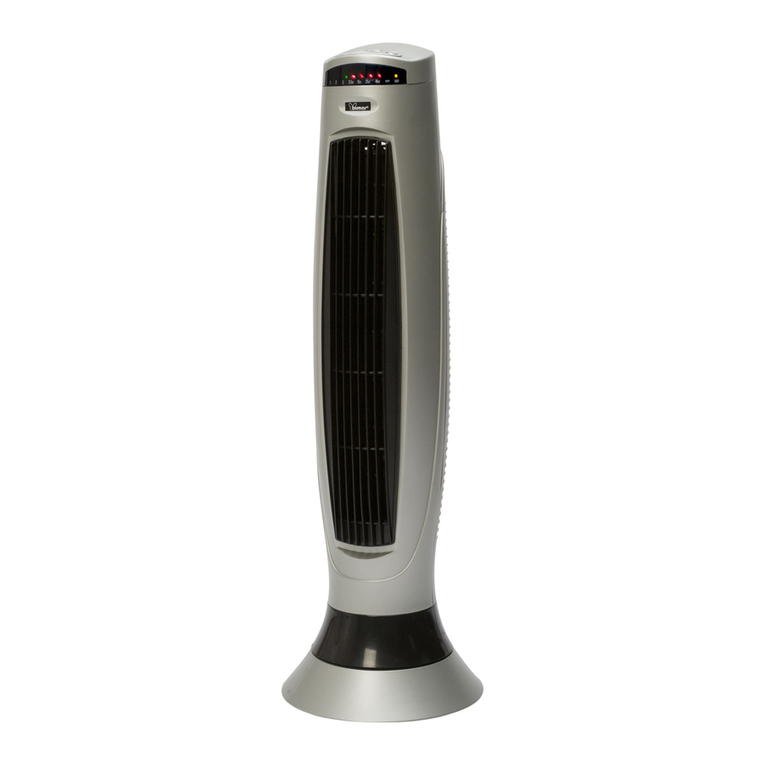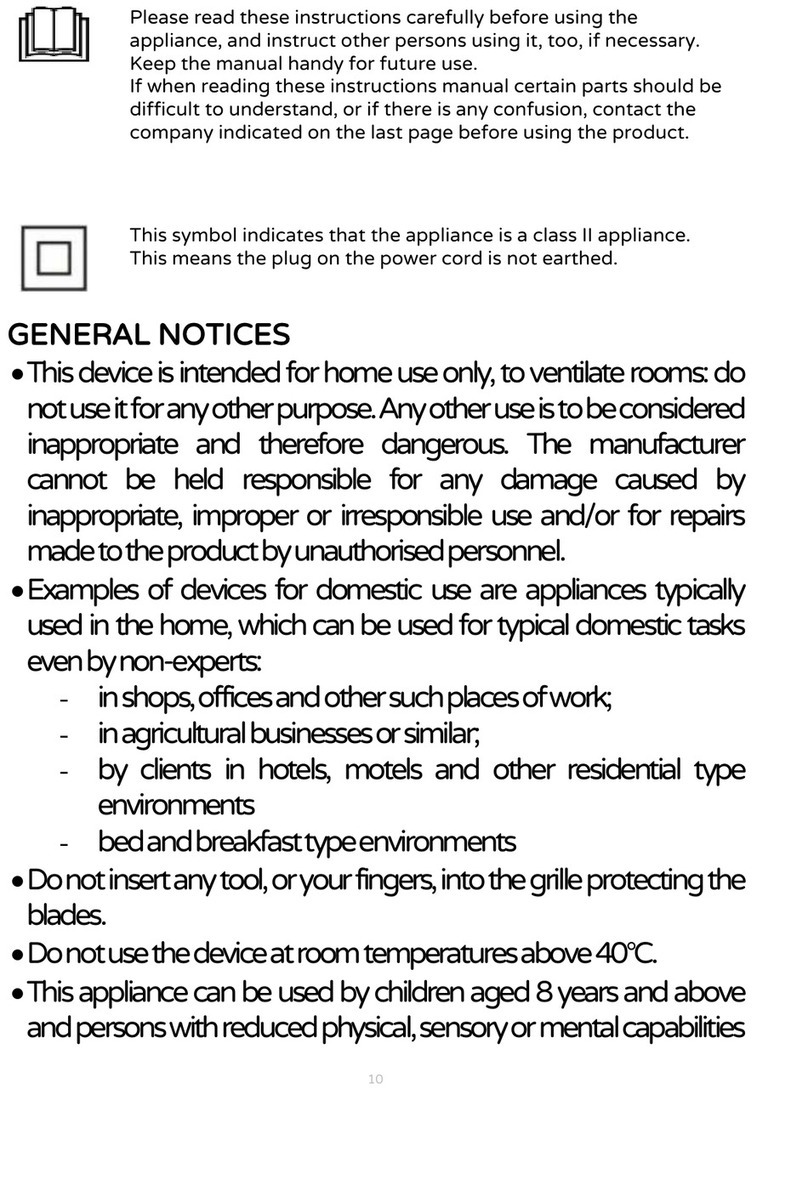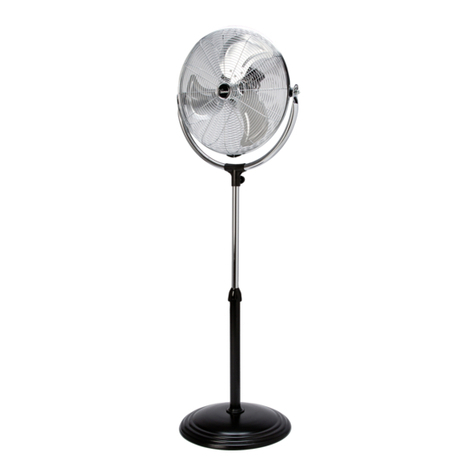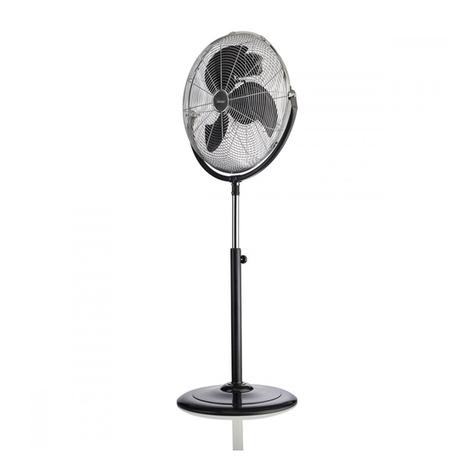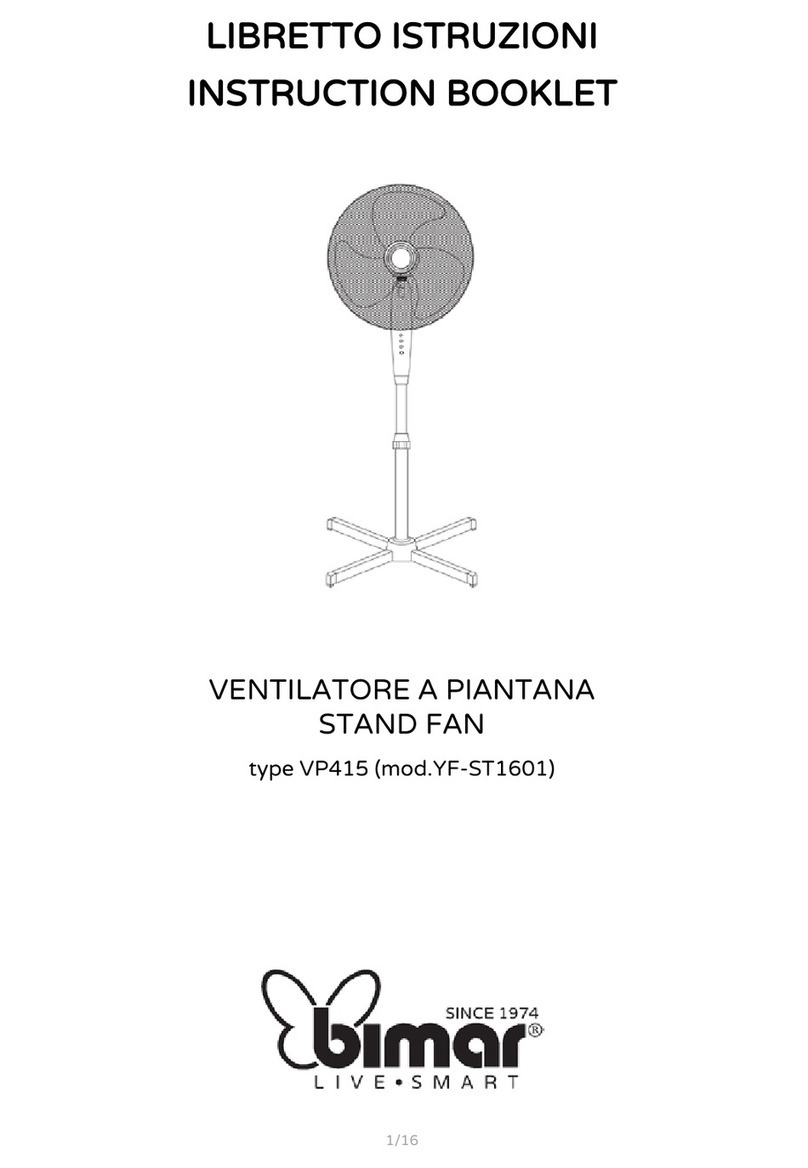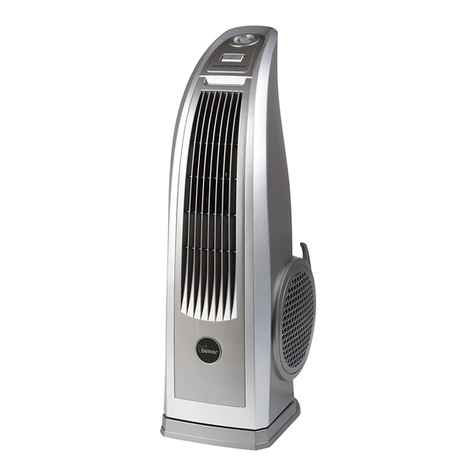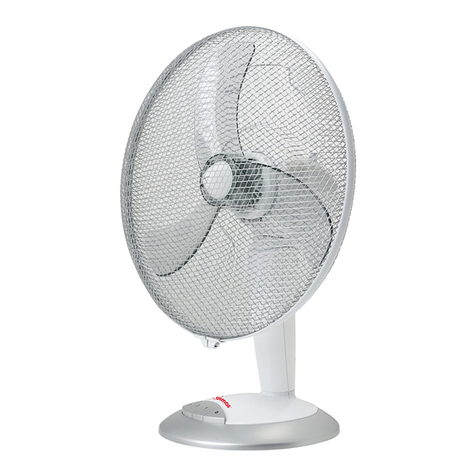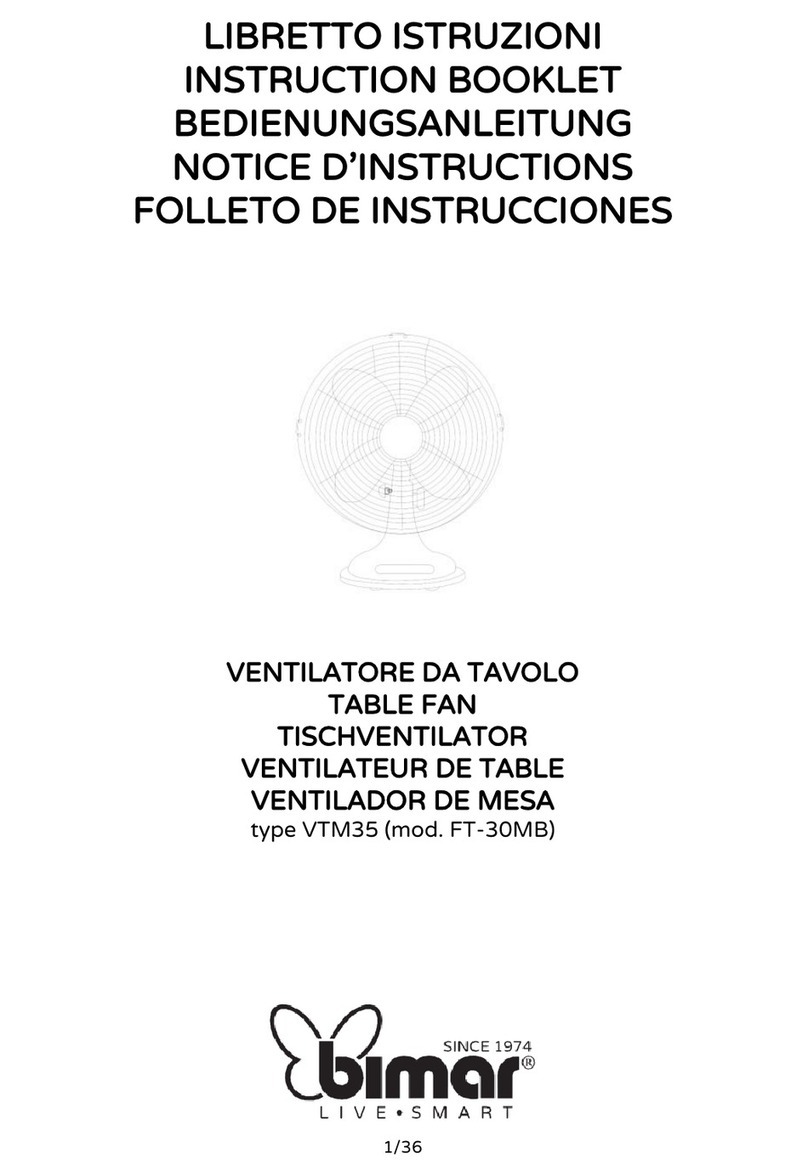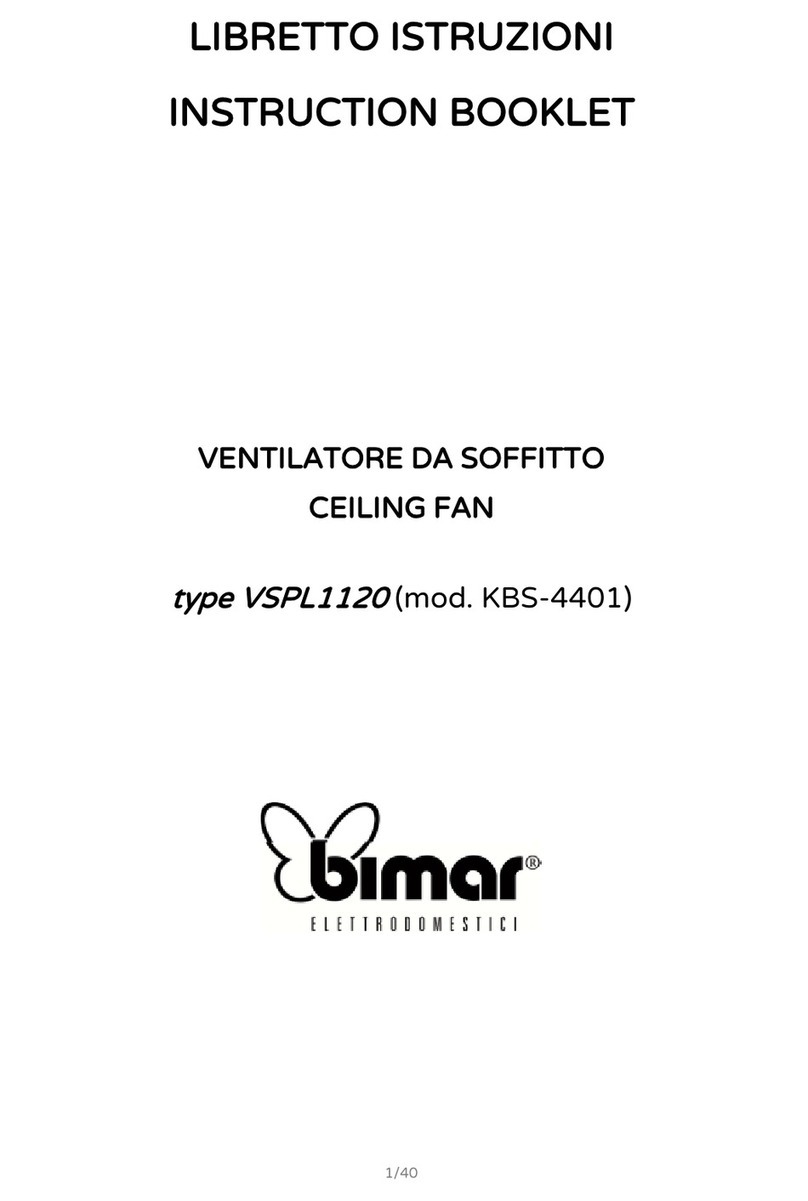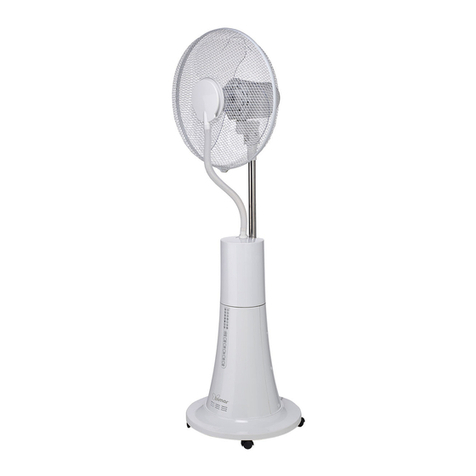
5/40
automaticamente, evitando così rischi di danni a persone, animali o
cose.
•Incasodiguastoocattivofunzionamentospegnerel’apparecchioe
farlo controllare da personale professionalmente qualificato; le
riparazioni effettuate da personale non qualificato possono essere
pericolose e fanno decadere la garanzia.
•Assicurarsiche il ventilatoresia scollegato dallaretedi alimentazione
prima di togliere lo schermo di protezione (12).
•Dopo aver tolto l’imballaggio, assicurarsi dell’integrità dell’apparecchio; in caso di dubbio
non utilizzarlo e rivolgersi a personale professionalmente qualificato. Gli elementi
d’imballaggio (sacchetti di plastica, polistirolo espanso, chiodi, ecc.) non devono essere
lasciati alla portata di mano di bambini in quanto potenziali fonti di pericolo, ma vanno
smaltiti secondo le norme vigenti negli appositi contenitori per la raccolta differenziata.
: eventuali adesivi o fogli pubblicitari applicati sulla griglia, devono essere
rimossi prima dell’uso dell’apparecchio.
•Prima di collegare l’apparecchio controllare che i valori di tensione riportati sulla targa dati
corrispondano a quelli della rete elettrica. In caso di incompatibilità tra la presa e la spina
dell’apparecchio, far sostituire la presa con altra di tipo adatto da personale
professionalmente qualificato, il quale accerti che la sezione dei cavi della presa sia idonea
alla potenza assorbita dall’apparecchio. In generale è sconsigliato l’uso di adattatori e/o
prolunghe; se il loro uso si rendesse indispensabile, devono essere conformi alle vigenti
norme di sicurezza e la loro portata di corrente (ampere) non deve essere inferiore a quella
massima dell’apparecchio.
•Prima di ogni utilizzo verificare che l’apparecchio sia in buono stato, che il cordone elettrico
non sia danneggiato: in caso di dubbio rivolgersi a personale professionalmente qualificato.
•La presa di corrente deve essere facilmente accessibile in modo da poter disinserire con
facilità la spina in caso di emergenza.
•Posizionare l’apparecchio lontano da:
-fonti di calore (ad es. fiamme libere, fornello gas, ecc. )
-contenitori di liquidi (ad esempio, lavelli ecc.) per evitare schizzi d’acqua o che vi possa
cadere (distanza minima 2 metri)
-tessuti (tende, ecc.) o materiali volatili che possano ostruire la griglia di aspirazione;
verificare che anche la parte anteriore sia sgombra da materiali volatili (polvere, ecc.).
•Questo apparecchio NON è idoneo per impiego in ambienti con atmosfere esplosive (con
presenza di sostanze infiammabili sotto forma di gas, vapore, nebbia o polvere, in
condizioni atmosferiche in cui, dopo l’accensione, la combustione si propaga nell’aria).






